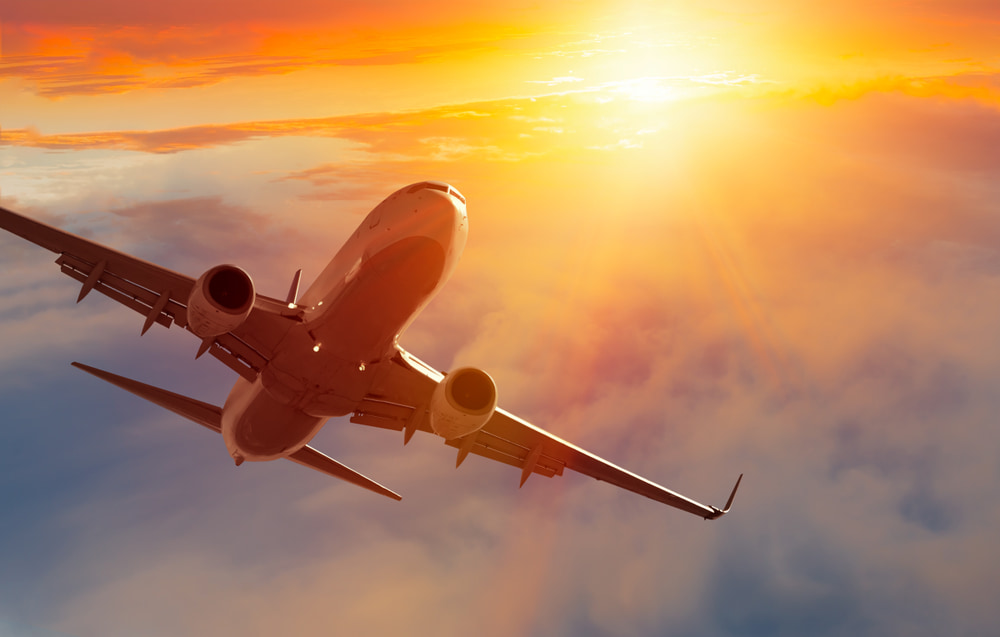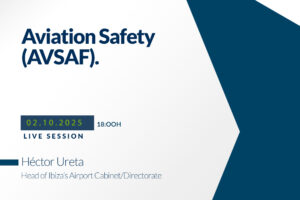
Freedoms of the Air: Definition, Classification, and Importance in Commercial Aviation
News
Freedoms of the Air are one of the fundamental pillars that enable international air transport. They consist of a set of rights that regulate how and where aircraft can fly, allowing overflight of territories, technical stopovers, and the operation of commercial flights between nations. If you would like to learn more about this topic, we recommend visiting the official page of ICAO (International Civil Aviation Organization), the organization responsible for establishing and overseeing these standards worldwide.
In this article, we will explore in detail what air freedoms are, their classification, and their importance in commercial aviation. We will also include practical examples and links to external resources that will allow you to delve deeper into the subject.
Índice
What Are the Freedoms of the Air?
Definition and Origin
Air freedoms are international rights that allow an airline to operate flights through the airspace of foreign countries. This ranges from simply overflying a country without landing to picking up and delivering passengers or cargo in different nations. Their origin dates back to the post–World War II period, when the boom in air transport highlighted the need to regulate the use of airspace. ICAO played a crucial role in defining these standards, which are commonly known as “ICAO air freedoms.”
For a historical perspective and more details on the evolution of air transport, you can consult the Wikipedia article on Commercial Aviation.
Importance in International Aviation
The impact of air freedoms on international aviation is immense. These rights allow airlines to optimize their routes, reduce flight times, and lower operating costs, which translates into greater global connectivity. Among the most notable benefits are:
- Route Optimization: By permitting overflights and technical stopovers, airlines can choose more direct and efficient routes.
- Promotion of International Trade: They connect global markets and facilitate the exchange of goods and services.
- Boost to Tourism: They open routes to tourist destinations, benefiting both local and global economies.
If you are interested in delving deeper into the dynamics of international trade and air logistics, we recommend visiting the IATA page (International Air Transport Association).
Classification of Freedoms of the Air
The classification of air freedoms is organized into three main groups: technical freedoms, commercial freedoms, and other provisions related to cabotage. Below, each group is described in detail.
Technical Freedoms
These freedoms are aimed at ensuring the safety and efficiency of flights, without direct commercial purposes.
First Freedom: Right of Overflight Without Landing
This freedom allows an aircraft to fly over the airspace of a country without the need to land. For example, a transatlantic flight between Madrid and New York may overfly several countries without stopping, provided it complies with local regulations.
For more information on airspace regulation, you can consult the ICAO Airspace Guide.
Second Freedom: Right of Technical Stopover Without Commercial Purposes
This permits a technical stopover in a foreign territory for refueling, maintenance, or crew change without picking up or dropping off passengers or cargo. A typical example is a stopover in Iceland to refuel on a route connecting Europe with North America.
Commercial Freedoms
These freedoms facilitate the operation of flights for commercial purposes by allowing the boarding or disembarking of passengers and cargo in different countries.
Third Freedom: Right to Disembark Passengers and Cargo in Another Country
This grants an airline the right to land in a foreign country to disembark passengers or cargo, provided the flight departed from its country of origin. A common example is a flight that departs from Paris and makes a stop in Berlin to drop off some passengers.
Fourth Freedom: Right to Board Passengers and Cargo from Another Country
This allows an airline to pick up passengers or cargo in a foreign country and bring them to its country of origin. For example, a British airline might operate a flight that picks up passengers in Amsterdam to transfer them to London.
Fifth Freedom: Right to Transport Passengers and Cargo Between Two Foreign Countries
This freedom is strategic because it allows an airline—whose flight begins or ends in its home country—to transport passengers or cargo between two foreign countries. An example is a flight that departs from Dubai, picks up passengers in Istanbul, and continues to London, connecting three different markets.
Other Freedoms
In addition to technical and commercial freedoms, there are other provisions that facilitate more complex operations, especially those related to cabotage.
Sixth Freedom: Combination of the Third and Fourth Freedoms
This allows, during an international flight, an airline to pick up passengers or cargo in a foreign country and drop them off in another foreign country. For example, a flight departing from Tokyo might stop in Honolulu to pick up passengers and then continue to Los Angeles.
Seventh Freedom: Right to Operate Between Two Foreign Countries Without Connection to the Country of Origin
This freedom gives an airline the possibility to operate routes completely independent of its home country. For instance, a Singaporean airline could offer a direct service between Sydney and New York without any direct connection to Singapore.
Eighth Freedom: Right of Consecutive Cabotage
This refers to the possibility that an international flight, once landed in the destination country, continues to operate an internal (cabotage) service within that same country. Although less common, this freedom is useful for optimizing routes and connecting local markets with international routes.
Ninth Freedom: Right of Autonomous Cabotage
This allows a foreign airline to operate domestic flights in another country independently. This right is highly restrictive and is granted under exceptional conditions, as it can create direct competition with local airlines.
To better understand the concept of cabotage and its implications, we recommend reviewing the Cabotage article on Wikipedia.
Importance of Air Freedoms in Commercial Aviation
Air freedoms play a crucial role in the development and expansion of commercial aviation. Below are some of the most important aspects:
Facilitation of International Trade
Thanks to these freedoms, airlines can optimize their routes and offer more direct connections between global markets. This allows for a faster and more cost-effective exchange of goods and services, thereby energizing the international economy. The World Trade Organization (WTO) also emphasizes the importance of connectivity in global trade—an aspect enhanced by efficient air operations.
Promotion of Global Tourism
Tourism is one of the sectors that benefits most from air freedoms. The ability to establish direct routes or efficient stopovers facilitates access to tourist destinations, which benefits both visitors and local economies. For example, many airlines use the fifth freedom to connect strategic tourist destinations, boosting the flow of tourists. You can find more information on the impact of tourism on the global economy at the World Tourism Organization (UNWTO).
Practical Examples of Application
To illustrate how air freedoms are applied in practice, consider the following real or hypothetical examples:
- Example 1: A European airline uses the first freedom to overfly various countries without landing, optimizing a transatlantic route between Madrid and New York.
- Example 2: A commercial flight makes a technical stopover in Iceland (second freedom) to refuel on a route connecting Europe with North America.
- Example 3: A Gulf airline operates a route that begins in Dubai, picks up passengers in Istanbul (using the fifth freedom), and continues to London, connecting three important economic centers.
- Example 4: An Asian airline expands its international network using the seventh freedom, operating a direct flight between Sydney and New York without any connection to its country of origin.
These examples demonstrate how air freedoms facilitate the operation of complex routes, open up new markets, and enable airlines to compete in an increasingly globalized environment.
Frequently Asked Questions about Freedoms of the Air
Below are answers to some of the most common questions:
What is air freedom in aviation?
It is the right that airlines have to operate international flights, which includes overflying foreign territories, making technical or commercial stopovers, and transporting passengers and cargo, all under the regulations established by organizations such as ICAO.
How many air freedoms are there?
Generally, nine air freedoms are recognized, ranging from technical rights (first and second freedoms) to commercial and cabotage provisions (third to ninth).
What is the fourth air freedom?
It allows an airline to board passengers and cargo in a foreign country and transport them to its country of origin, thereby expanding the range of international routes.
What are the rules of the air?
These are the international and national regulations that govern the use of airspace. They include guidelines on overflight, landings, communications, and operational safety, and can be consulted in official ICAO documents.
What is sovereign airspace?
This is the area of airspace that each country exclusively controls and regulates. If you want to delve deeper into this concept, you can read more in the Britannica online.
What is a seventh freedom flight?
It is a flight in which an airline operates between two foreign countries without any direct connection to its country of origin, taking advantage of market opportunities in regions with high demand for international connections.
Conclusion
Summary of the Importance of Air Freedoms
Air freedoms are essential for the development and expansion of commercial aviation. By allowing airlines to optimize their routes, connect international markets, and operate efficiently, these freedoms boost trade, promote tourism, and improve global connectivity. From the right of overflight without landing to the complex operations of cabotage, each of these provisions plays a crucial role in modern air transport.
How to Delve Deeper into Commercial Aviation
If this article has sparked your interest in the world of aviation, we invite you to explore more resources and specialized courses. In addition to the information presented here, you can visit sites such as FlightGlobal for news and analysis, or the Aviation Week portal to stay up-to-date with the latest trends and technologies in the aviation industry.
Final Reflection
In an increasingly globalized world, understanding air freedoms is essential to grasp how the world is connected through aviation. These regulations not only facilitate the operation of international flights but also enable the creation of new routes and commercial opportunities, boosting both global trade and tourism. For those interested in delving deeper into these topics, it is important to stay informed through reliable and up-to-date sources. ICAO, IATA, and other international organizations offer a wealth of resources that can be extremely useful for aviation professionals and enthusiasts.
Resources and Useful Links
- ICAO (International Civil Aviation Organization)
- IATA (International Air Transport Association)
- Wikipedia – Commercial Aviation
- Wikipedia – Cabotage
- World Tourism Organization (UNWTO)
- World Trade Organization (WTO)
- Britannica – Airspace
- FlightGlobal
- Aviation Week
In conclusion, air freedoms are much more than a set of technical regulations—they are the foundation that allows airlines to connect the world, optimize routes, and improve operational efficiency. Understanding these rights is essential to grasp how international air transport works and its impact on global trade and tourism. If you wish to continue learning about this fascinating topic, we invite you to consult the external resources mentioned and stay updated with the latest news and developments in the aviation sector. Continuous education and up-to-date information are key to seizing the opportunities offered by this dynamic field.
Keep exploring and never stop learning! Commercial aviation is an ever-evolving field, and air freedoms will remain an essential element for its future development.
CONTACT info@itaerea.com +34 968 966 885 TEACHERS TRAINING





